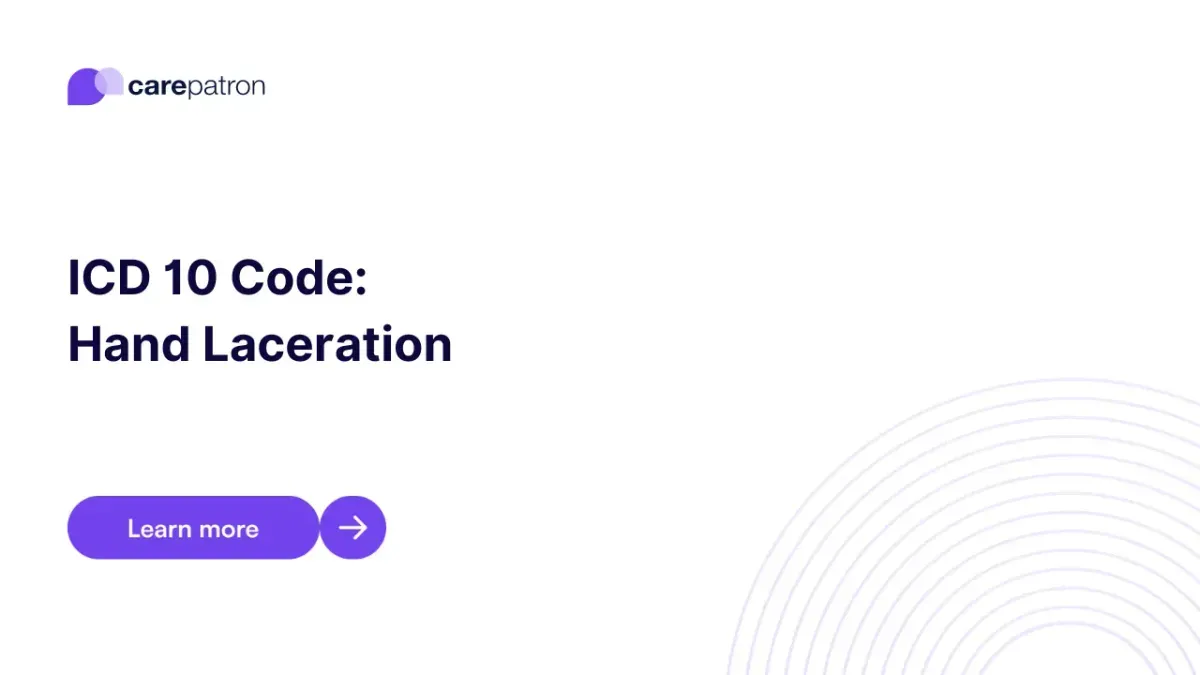
Hand Laceration ICD-10-CM Codes
Read this short guide and learn about hand laceration ICD codes you can use.
Use Code
Commonly asked questions
This means that there’s an object accompanying the laceration. This object is also what caused the laceration in the first place. An example would be a glass shard that gut stuck in the hand.
It depends on the laceration's depth, but it can take up to three months. Stitching the laceration up will speed up the healing process if the laceration is deep. It can reduce the healing process to two or almost two months.
A laceration is characterized by a horizontal cut or tear that seems irregular and jagged. A puncture wound is represented by an object piercing the body and creating a small hole (e.g., needles, nails, bullets).
EHR and practice management software
Get started for free
*No credit card required
Free
$0/usd
Unlimited clients
Telehealth
1GB of storage
Client portal text
Automated billing and online payments
